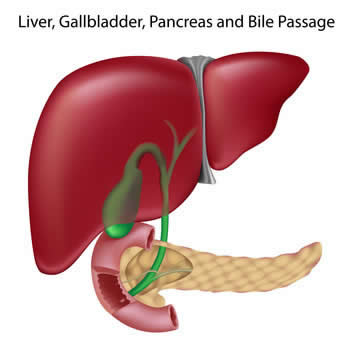The important constituents in schisandra are lignans (schizandrin, deoxyschizandrin, gomisins, and pregomisin) found in the seeds of the fruit. The chemicals in schisandra improve liver function by stimulating enzymes in the liver and promoting liver cell growth. Japanese researchers have shown that 2 Schizandra lignans (schizandrin and gomisine) have strong hepatoprotective properties. New Chinese research has been reported recently confirming that Schisandra lignanes possess antihepatotoxic activities, improve liver function and help prevent hepatitis.
Schisandra Chinensis and Liver
Like milk thistle, schizandra is a important herb for reducing liver inflammation, whether the cause is viral, or chemical. Active ingredients including lignans, vitamins and phytonutrients in schisandra chinensis provide a normalizing effect on the body. Lignans are anti-inflammatory, and appear to protect the liver by activating the enzymes in liver cells that produce glutathione. In animal studies, it has been shown to provide important protection against chemical and medication induced liver damage and to promote healing of existing damage.
Schisandra extract reduce blood levels of an enzyme called SGPT (glutamic-pyruvic transaminase) in patients with hepatitis. Lab experiments show that schizandra extracts improve the liver’s ability to make the enzyme glutathione peroxidase, which deactivates several kinds of toxic free radicals that attack the outer membranes of liver cells. Animal-based studies suggest schisandra chinensis may protect the liver from toxic damage, improve liver function, and stimulate liver cell regrowth. Preservation from hepatotoxicity and improvements in phase I metabolism are documented in rats administered 1 ml/kg carbon tetrachloride 24 hours after exposure to schisandra chinensis extract. The results of a study in rats demonstrated that a lignan-enriched extract of schisandra protected against liver damage from either aflatoxin or cadmium chloride. Oral administration of schisandra lignans (100 and 200 mg/kg/d, 14d) significantly reduced the number of metastatic colonies in liver of restrained mice.
In a study, patients with chronic viral hepatitis were given 500 mg schisandra extract 3 times daily or liver extract and B vitamins. Among those given schisandra, SGPT levels declined to normal levels in 68% compared to 44% of the control group. In 1986, Chinese researchers reported more than 5000 cases of various types of hepatitis have been treated with schizandra preparations, resulting in the reduction of elevated liver enzymes. Lignans have been found to lower blood levels of serum glutamic pyruvic transaminase (SGPT), a marker for infective hepatitis and other liver disorders. According to researchers, elevated SGPT values returned to normal in 75 percent of patients treated after 20 days of taking an unspecified schizandra extract.
 Congestive heart failure, a condition in which the heart has trouble pumping blood, which leads to fluid accumulating in the legs and lungs. A double-blind, placebo-controlled study showed,
Congestive heart failure, a condition in which the heart has trouble pumping blood, which leads to fluid accumulating in the legs and lungs. A double-blind, placebo-controlled study showed,  In a study conducted in Iran, the scientists treated 55 patients with active and chronic cases of hepatitis C infections with 630 mg a day of silymarin for 24 weeks. After 24 weeks of therapy, the ALT liver enzyme levels decreased down from an average of 108 U/L to an average of 70, and AST levels decreased from an average of 99 U/L to an average of 60. Quality of life scores improved substantially and of the 55 patients treated, 9 had HCV-negative RNA levels after the therapy. In a 6-month double-blind study of 36 patients with chronic alcoholic liver illness, the group given silymarin (Legalon) showed normalization of their bilirubin, aspartate transaminase and alanine transaminase serum levels. In different study, 106 patients with mild acute and subacute liver illness characterized by elevated serum transaminase levels were randomized to receive silymarin or placebo. Of the 97 patients who completed the 4-week study, there was a statistically considerable greater decrease in transaminase levels in the silymarin group.
In a study conducted in Iran, the scientists treated 55 patients with active and chronic cases of hepatitis C infections with 630 mg a day of silymarin for 24 weeks. After 24 weeks of therapy, the ALT liver enzyme levels decreased down from an average of 108 U/L to an average of 70, and AST levels decreased from an average of 99 U/L to an average of 60. Quality of life scores improved substantially and of the 55 patients treated, 9 had HCV-negative RNA levels after the therapy. In a 6-month double-blind study of 36 patients with chronic alcoholic liver illness, the group given silymarin (Legalon) showed normalization of their bilirubin, aspartate transaminase and alanine transaminase serum levels. In different study, 106 patients with mild acute and subacute liver illness characterized by elevated serum transaminase levels were randomized to receive silymarin or placebo. Of the 97 patients who completed the 4-week study, there was a statistically considerable greater decrease in transaminase levels in the silymarin group.